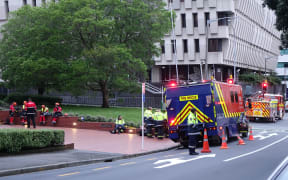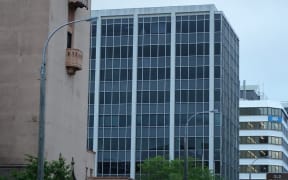A 10-storey building on Molesworth Street that is in danger of collapse could be brought down by an aftershock, warns the Wellington City Council.
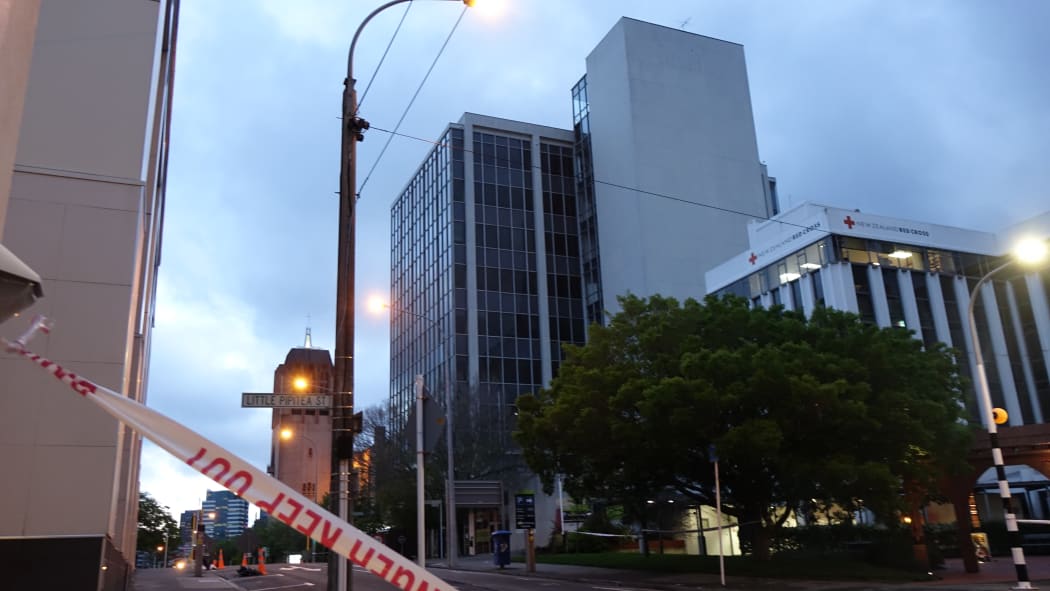
The condemned building on Molesworth Street in central Wellington. Photo: RNZ / Mei Heron
The building has been cordoned off since Tuesday evening, after a major structural beam "fractured like a bone" in Monday's massive 7.8 earthquake.
Part of the street is to be reopened this morning.
Council building control manager Mike Scott told Morning Report it was safe to reduce the cordon.
"We've had advice from some of the top engineers in the country, we've also had the Fire Service involved, and urban search and rescue. We're not taking a dangerous approach, we're being very, very, very cautious."
Mr Scott said the demolition was expected to start within days.
Hawkestone Street has now been re-opened to traffic, and pedestrians can walk on the northern side of the street.
Residents on Collina Avenue remain evacuated, although access will be possible after 10am this morning.
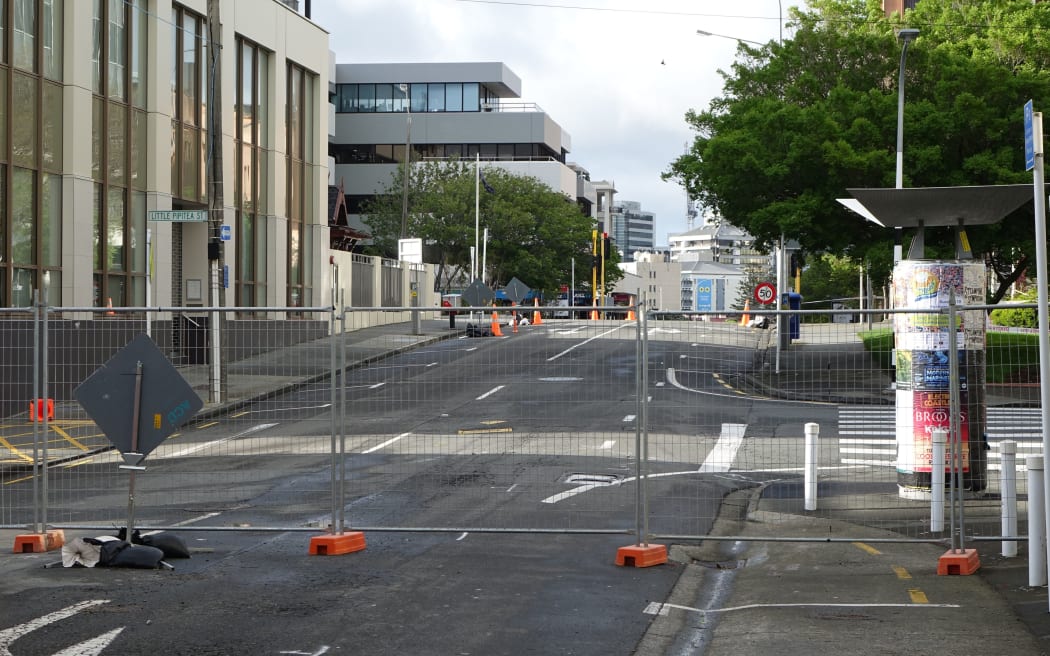
The cordon around quake-damaged Wellington buildings. Photo: RNZ / Emile Donovan
A limited number of Harbour Quays buildings have sustained some damage, and the NEC buildings on the corner of Manners and Taranaki footpath has been also been cordoned to protect pedestrians from glass.
Mayor Justin Lester has estimated about 60 buildings in Wellington were now closed as a result of the earthquake.
Mr Scott said the demolition of the 10-storey building in danger of collapse would have to be done slowly, and in two stages.
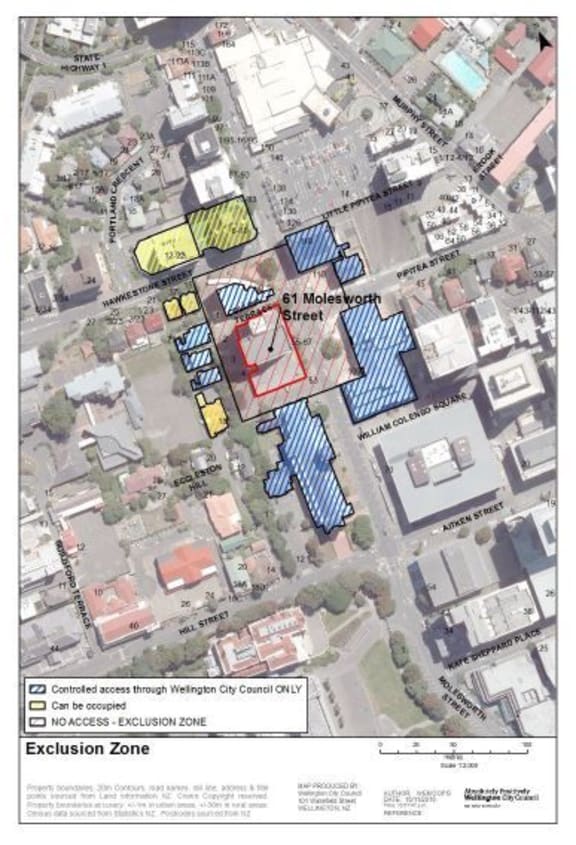
The cordons in central Wellington. Photo: Supplied
He said the building owners and their insurers would be responsible for the demolition, but the council was doing everything it could to ensure it is done swiftly and safely.
"The actual structural failure is on level four, so it will be removing the front of the building down to level four, to get rid of that danger. And once that's done, they'll be looking at how to actually get the rest of the building down."
Mr Scott said people working in surrounding businesses would not be able to get back into their buildings until at least the first phase of the demolition is over.
CentrePort chair Lachie Johnstone said concrete structures in Statistics New Zealand House had collapsed, but the damage was localised.
CentrePort has reported damage to wharves and roadway infrastructure, and that liquefaction and differential settlement have left uneven surfaces.
Aotea Quay is also out of action and the damage will be assessed today.
Chief Statistician Liz McPherson earlier this week posted a message on Facebook, telling staff she would ask engineers how such a new building could suffer such damage.
Mr Johnstone told Morning Report he understood why people were frustrated.
"We completely understand how potentially bad it could have been. But in terms of the specifics of the building we don't absolutely know what's happened. We don't know completely the nature of the damage or the extent of the damage."
Mr Johnstone said said it was not yet known whether the building failed, or whether nature had thrown something that exceeded the building's capacity to handle it.
The Defence Force is awaiting an engineer's report to find out the extent of earthquake damage to its 10-year-old Wellington headquarters.
RNZ understands the 1200 staff who work in the Aitken St building are not expected to be able to go back into it for at least a year. The building was opened in 2007 and documentation from its architects showed it was built to "high seismic and security standards".
Engineers were now assessing it, and a full report was expected in the next few days.
Prime Minister John Key said he was staggered to think such earthquake damage had been done to a new building, which was believed to comply with close to 100 percent of the building code.
The Defence Force has not commented on the extent of the damage.
The building is one of about 10 in the capital closed because of the quake.
In a statement, Government Property Group director David White said two of the more than 100 properties occupied by government agencies in Wellington were currently known to have structural issues that meant people could not return to the buildings for some time.
"A small number of other buildings have still not finalised their assessments. A number of buildings have been cleared but are still cleaning up."
Meanwhile, the cordon near another evacuated building on Tennyson Street has been lifted, although residents are not being allowed back in at the landlords' request until remediate work was completed.
Mathew Lee - who worked at an architectural firm on Tennyson Street - said his company had to get out of its offices because of the risk posed by the apartment block next door.
"The Fire Service and police showed up and started cordoning off the street and evacuating the building, firstly, the apartment building itself and then the buildings next door.
"We were able to remove all our computers and server and hard drives and what not just in case this is going to be a long-term thing."
The Ministry for the Environment has confirmed its Wellington headquarters has been closed, and won't be reopened again this week.
It said while early assessments of the building on Kate Sheppard Place showed it to be structurally sound, it has made the precautionary decision to close it pending further assessment.
More than 2000 aftershocks have been recorded since the quake on Monday.
There were 290 aftershocks in the 12 hours to 5am today. The largest was a strong 4.9 quake near Kaikoura just after 4am, centred 20km south of the town.
